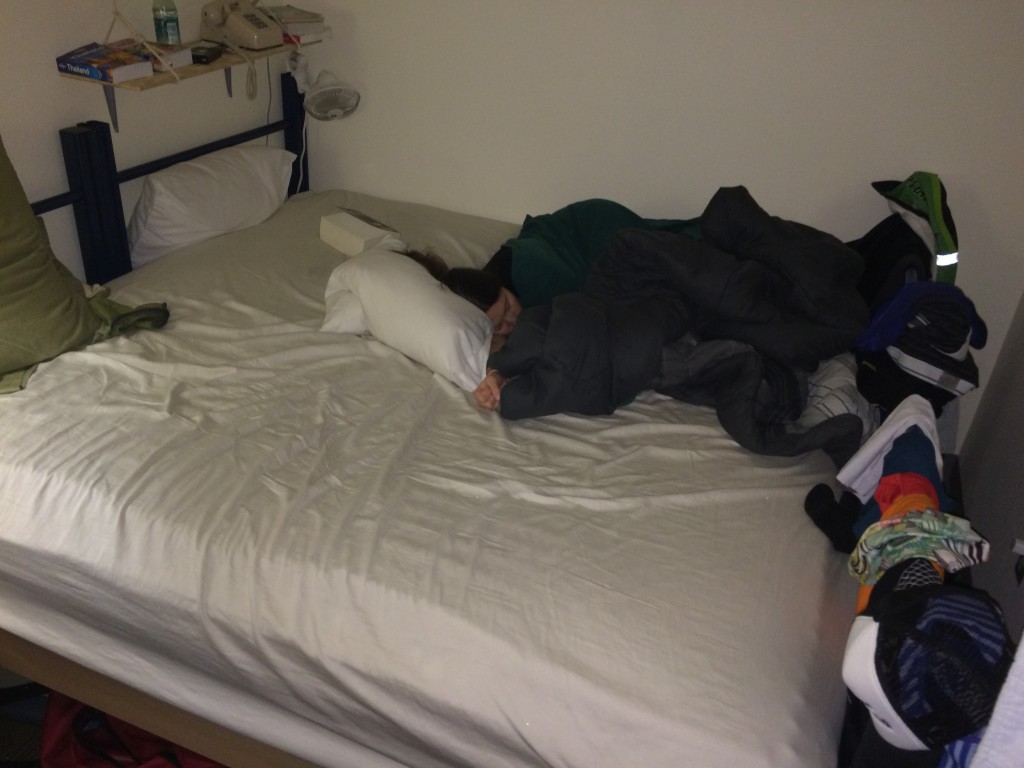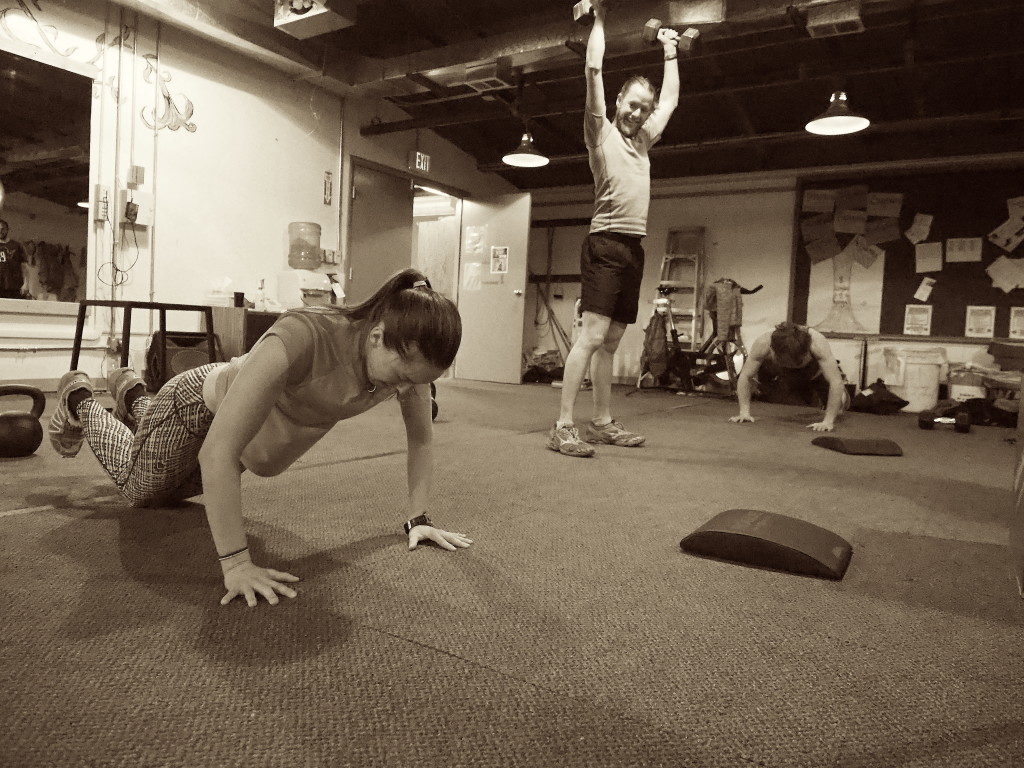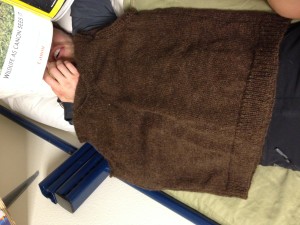My alarm goes off in the dark. My phone blinks 5:25 a.m. (or 3:25 a.m. depending on the day). Our room has no windows, so I get ready by the light of my headlamp so as to not wake Richard.
After a trip down the hall to the bathroom, I reluctantly put on my uniform. I say reluctantly because the pants are uncomfortably tight around the waist and they dig into my skin, and the shirt is a scratchy fabric that is functional because it dries quickly but I don’t enjoy wearing it. On top goes the hat. On the bottom goes my non-slip, waterproof shoes.
I say good-bye to Richard and walk downstairs to the galley. It’s quiet in the cafeteria at 6 a.m. (even more so at 4 a.m.). Most people don’t head to breakfast until 6:30 or 7 a.m.
Most mornings, I go to the Pots Room first thing. That’s where we scrub all the food prep dishes like pans, pots, large bowls and huge bowls. Mostly, it’s hotel pans and sheet pans. They’re basically giant casserole dishes and cookie sheets.
The huge bowls come to us in their own wheeled stands. They are so large that one person can’t lift them if they’re full of food, and a couple are so large that one person can’t lift them empty.
After pots, it’s usually time for a turn on the Floor. The operating procedures call for each person to switch tasks every half-hour to two hours, depending on need. When I work on the Floor, that means making sure everything stays stocked while the meals are going on. (Breakfast is 4:30 to 7:30 a.m.; lunch is 11 a.m. to 1 p.m.; dinner is 5 to 7:30 p.m.) I work breakfast and lunch. During each meal, a counter is open for hot foods, like meats, vegetables, or other prepared foods. A galley worker must make sure those trays are replaced before the food runs out. That’s called the Hot Line.
After each meal comes chores. We have to put away all the food the chefs want to keep and reuse (or throw away — there’s quite a bit of that, unfortunately). But mostly our chores involve cleaning. We clean all the surfaces where the food was, plus the floors and dishes.
If there’s any time left between cleaning up after one meal and preparing for the next, we “deep clean” things. That usually means taking apart things, cleaning them and putting them back together.
Throughout the 10-hour work day, we are allowed two half-hour breaks to eat, two 15-minute breaks to stretch and one 15-minute break to check for emails from the boss. The days are long and can be hard on the body. Fortunately, the people — bosses included — are nice people that make the hard work bearable.
I have found that taking in coffee at lunch is better for me than at breakfast or before my shift. That caffeine intake midway through the day helps me stay awake after my shift so that I can write or read or exercise without taking an hours-long nap to recover from work.
After my shift, if I drank the necessary coffee, I go over to Richard’s office and use the Internet. Or we go for a run.
After dinner we either go to yoga or CrossFit or a science lecture, depending on the day.
By the time that’s over, it’s definitely time for bed.
And that happens six days a week. It sounds dull, I know. But the experience is what you make it, I guess. And I am glad to be here and I’m doing what I can to enjoy the people and the environment.



Yay! You finished it. How long was it officially? 5 years? Does it fit?
I’m not sure. I think it was nearly six years (which means I started it in March, 2010), but Richard thinks it was nearly five years (he thinks I started it in March, 2011). It does fit pretty well. Which is great, (a) because it took for-freaking-ever and (b) because I was scared for the last year or so that it was going to be too big.
I just found your blog while looking for PCT stories,and stayed for the Antarctica stories. I saw a documentary movie by a communications guy at the New Zealand base. Sorry I can’t remember the title, but it was very interesting and entertaining. I look forward to your observations once winter and 24 hours of darkness hit.
Regarding the work schedule, at least it’s a short commute. 🙂